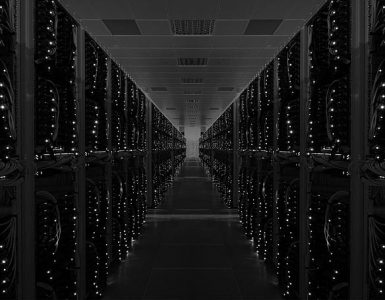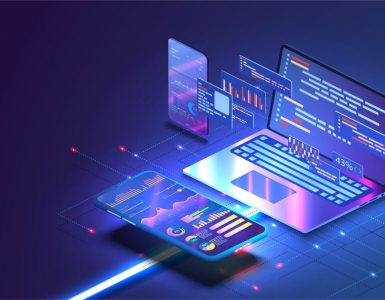In today’s rapidly evolving tech landscape, backend development is the unsung hero that powers the digital world. It forms the foundation for the seamless operation of websites, apps, and services.
Staying up-to-date on the latest backend development trends is crucial for developers, as it ensures that they are equipped to build robust and efficient systems that meet the ever-increasing demands of the digital era.
But first, what is backend development?
Backend development refers to the work done behind the scenes to make an application function effectively. It involves managing databases, handling server logic, and ensuring the server communicates with the front end properly. In essence, backend development is the backbone of any digital application.
Why is it important to stay up-to-date on backend development trends?
Staying current with backend development trends is vital for several reasons. It allows developers to:
- Enhance Efficiency: By adopting the latest technologies, developers can streamline processes, reduce latency, and improve system performance.
- Stay Competitive: In the competitive tech industry, being aware of the latest trends can give developers a competitive edge when lookinf for job opportunities or project bids.
- Improve Security: New trends often come with enhanced security features, which are crucial in protecting sensitive user data and preventing security breaches.
- Future-Proof Projects: Staying ahead in backend development ensures your projects remain relevant and adaptable to the ever-changing tech landscape.
Top 10 Backend Development Trends
Without further ado, let’s delve into the top 10 backend development trends for 2023 and beyond.
Trend 1: Serverless Computing
Serverless computing, often called Function as a Service (FaaS), represents a cloud computing model. In this model, cloud provider manages the server infrastructure, enabling developers to focus solely on writing code for specific functions or services.
Benefits of serverless computing
- Cost-Efficiency: Pay only for the resources you use.
- Scalability: Automatically scale based on demand.
- Simplicity: Reduced operational overhead.
How to implement serverless computing in your backend development projects
Start by selecting a cloud provider (e.g., AWS Lambda, Azure Functions) and create functions for your application. These functions will execute in response to specific triggers, such as HTTP requests or database changes.
Trend 2: Microservices Architecture
Microservices architecture breaks down applications into small, independently deployable services that work together. Each service is responsible for a certain piece of functionality.
Benefits of microservices architecture
- Scalability: Scale individual services as needed.
- Isolation: One service’s failure doesn’t affect the entire application.
- Flexibility: Easier updates and maintenance.
How to implement microservices architecture in your backend development projects
Identify the components of your application that can function independently, then design and build separate services for them. Use technologies like Docker and Kubernetes to manage containers.
Trend 3: Artificial Intelligence and Machine Learning (AI/ML)
AI and ML are used to enhance applications in various ways, such as user recommendations, data analysis, and natural language processing.
Benefits of using AI/ML in backend development
- Improved User Experience: Personalized content and recommendations.
- Data Insights: In-depth analysis and predictive capabilities.
- Automation: Streamlined tasks and processes.
How to implement AI/ML in your backend development projects
Start with data collection and preparation, then choose the appropriate machine learning algorithms. Train your models and integrate them into your backend system for real-time decision-making.
Trend 4: Containerization
Containerization represents a method of packaging an application and its dependencies together in a standardized unit, making it easy to deploy and run across various environments.
Benefits of containerization
- Consistency: Ensures consistent runtime environments.
- Portability: Run containers on any platform that supports them.
- Resource Efficiency: Minimal overhead compared to traditional virtual machines.
How to implement containerization in your backend development projects
Use tools like Docker to create and manage containers for your applications. Ensure your applications are built to be container-ready.
Trend 5: Edge Computing
Edge computing brings computation and data storage closer to data sources, reducing latency and improving real-time processing.
Benefits of edge computing
- Low Latency: Faster response times.
- Reduced Bandwidth Usage: Less data transferred over networks.
- Offline Functionality: Continues to work when disconnected from the central cloud.
How to implement edge computing in your backend development projects
Identify tasks that can benefit from edge processing, then deploy edge servers or devices in proximity to data sources.
Trend 6: NoSQL Databases
NoSQL databases are non-relational databases that provide flexible and scalable data storage solutions.
Benefits of using NoSQL databases
- Scalability: Easily handle large amounts of data.
- Flexibility: Suitable for unstructured and semi-structured data.
- High Performance: Faster data retrieval.
How to choose the right NoSQL database for your backend development project
Consider the data structure and usage requirements of your application to select the most appropriate NoSQL database, whether it’s document-based, key-value, column-family, or graph-based.
Trend 7: GraphQL
GraphQL is a query language for APIs. It allows clients to request only the data they need, reducing over-fetching and under-fetching of data.
Benefits of using GraphQL
- Efficient Data Retrieval: Clients get exactly the data they request.
- Versioning: No need to create multiple API versions.
- Strongly Typed: Queries are validated at compile-time.
How to implement GraphQL in your backend development projects
Design your GraphQL schema, define resolvers for data retrieval, and set up a GraphQL server to handle client requests.
Trend 8: Real-time Streaming
Real-time streaming involves transmitting data as it’s generated, allowing applications to receive and process data immediately.
Benefits of using real-time streaming
- Live Updates: Provides instant updates to users.
- Analytics: Enables real-time data analysis.
- Interactive Applications: Ideal for gaming and collaboration tools.
How to implement real-time streaming in your backend development projects
Use technologies like WebSockets, Apache Kafka, or RabbitMQ to establish real-time communication between clients and servers.
Trend 9: Event-driven Architecture
Event-driven architecture relies on events to trigger and communicate between services or components in a system.
Benefits of using event-driven architecture
- Scalability: Components can react independently to events.
- Loose Coupling: Services remain independent and loosely connected.
- Real-time Response: Immediate reaction to events.
How to implement event-driven architecture in your backend development projects
Design your system to emit and consume events, use message brokers like RabbitMQ or Apache Kafka, and implement event handlers to respond to events.
Trend 10: Asynchronous Programming
Asynchronous programming enables tasks to be executed concurrently, improving application responsiveness.
Benefits of using asynchronous programming
- Improved Performance: Avoids blocking operations.
- Responsive User Interfaces: Keeps UI responsive during resource-intensive tasks.
- Scalability: Handles multiple requests efficiently.
How do you implement asynchronous programming in your backend development projects?
Use asynchronous programming languages or frameworks, such as Node.js, to handle concurrent tasks.
Conclusion
In summary, staying current with backend development trends is essential to keep your skills and projects relevant in the ever-evolving tech landscape.
These top 10 trends for 2023 and beyond offer exciting opportunities to enhance efficiency, security, and user experiences in backend development.
As you embark on your journey to embrace these trends, remember that learning and adaptation are the keys to staying at the forefront of the field.
Here are a few tips for backend developers looking to stay up-to-date:
- Continuously educate yourself through online courses, books, and tutorials.
- Join developer communities to exchange knowledge and experiences.
- Attend conferences and meetups to network and learn from experts.
- Experiment with new technologies in personal projects.
- Stay curious and embrace change, as the tech world never stops evolving.
Good luck on your journey to becoming a backend development trendsetter in 2023 and beyond!






Add comment